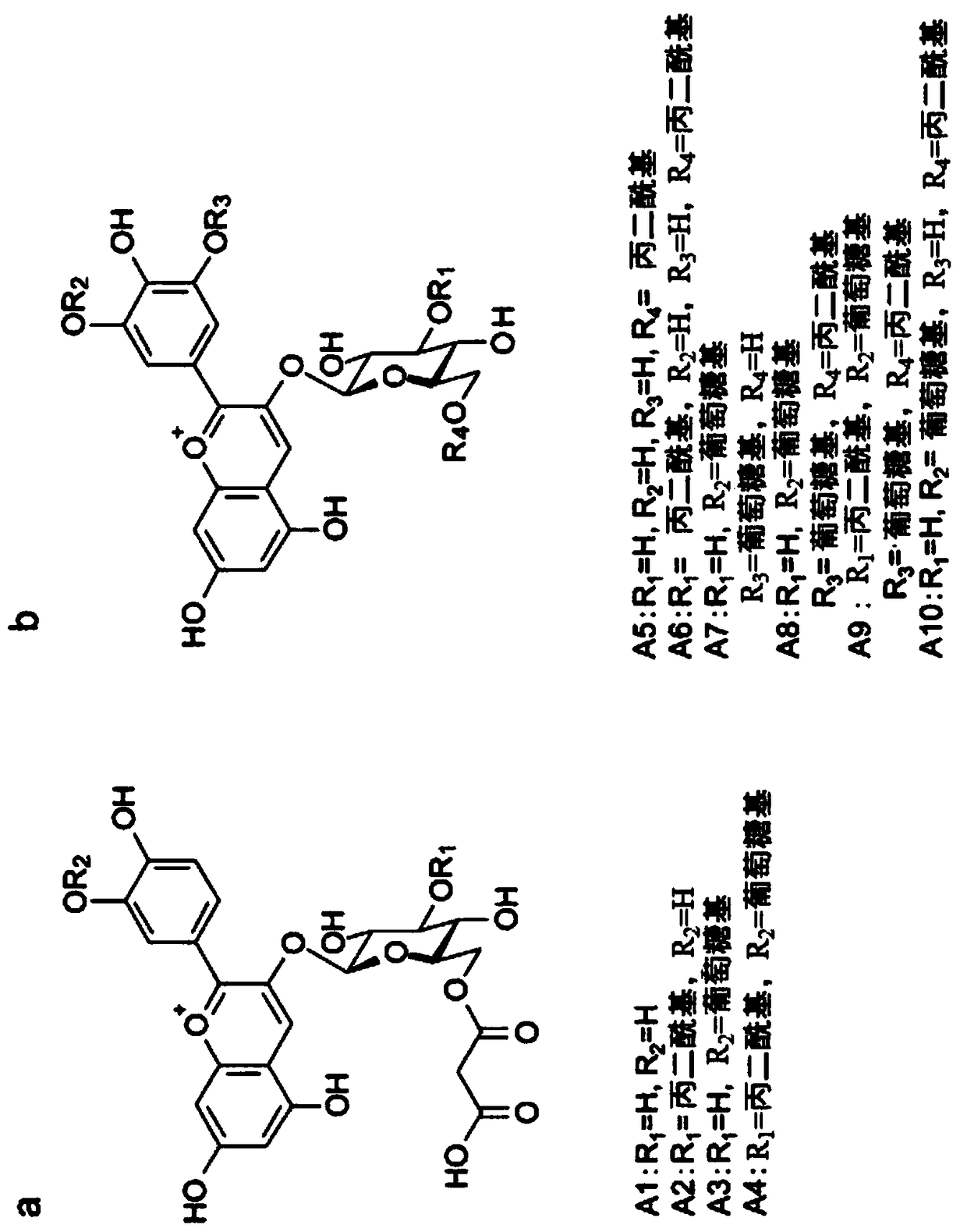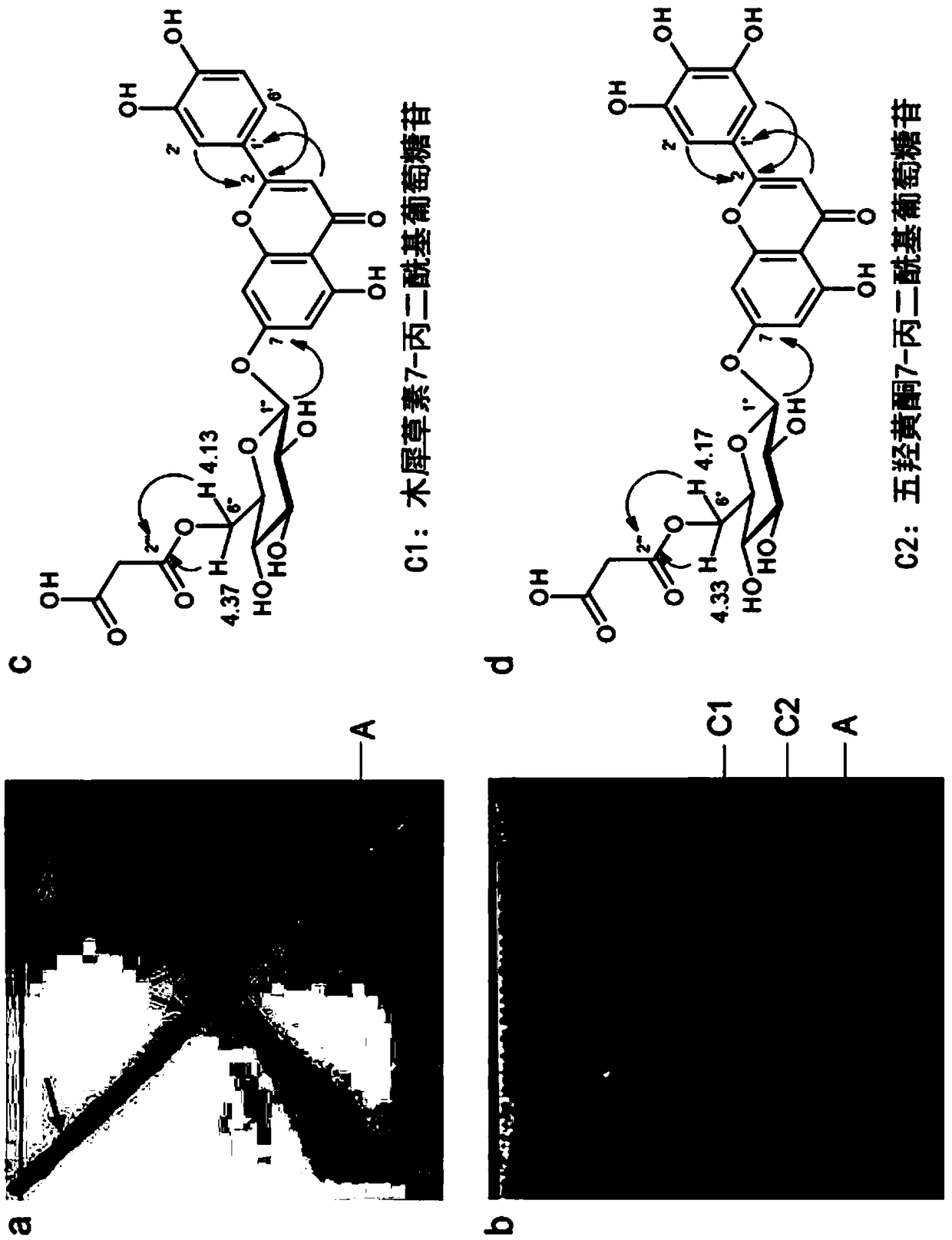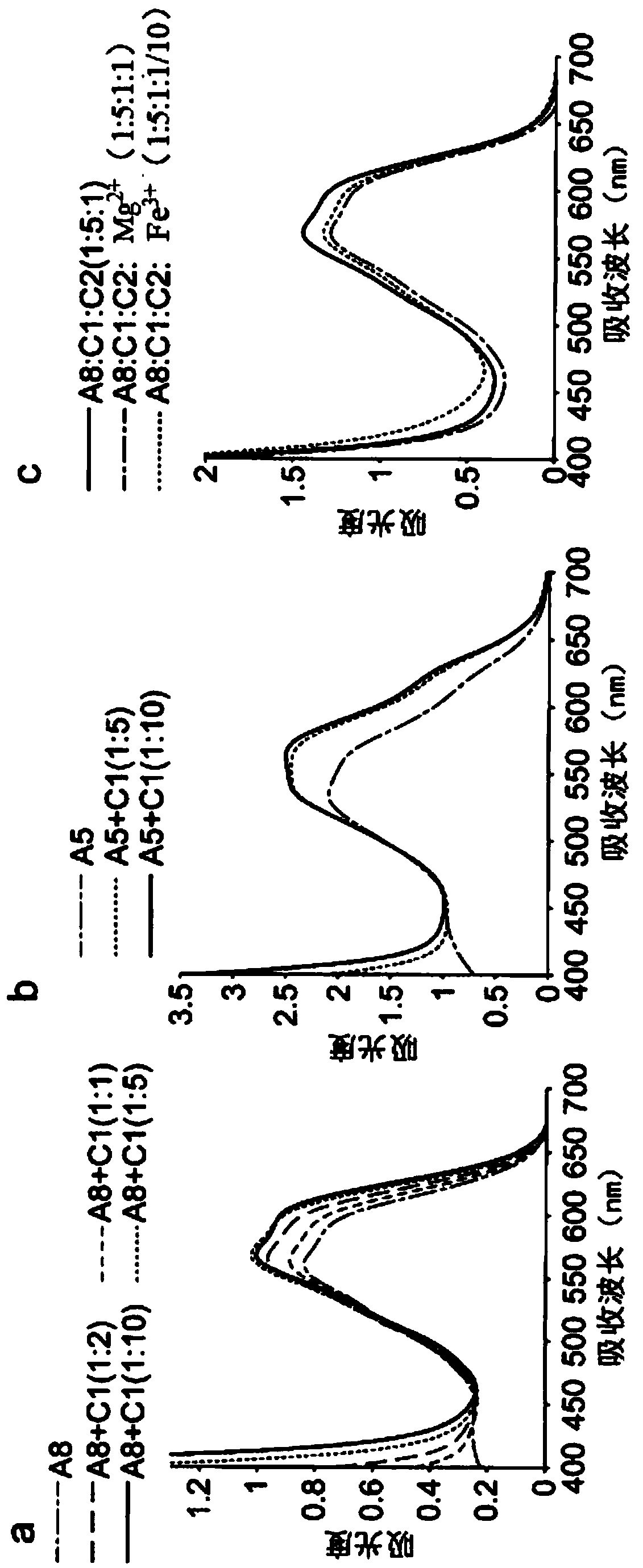Plant having blue flower color and breeding method therefor
A blue-based, plant-based technology, applied in botany equipment and methods, biochemical equipment and methods, plant cells, etc., can solve problems such as difficulties in making blue flowers, complex gene introduction and control, etc.
- Summary
- Abstract
- Description
- Claims
- Application Information
AI Technical Summary
Problems solved by technology
Method used
Image
Examples
Embodiment 1
[0085] [Example 1: Identification of delphinidin glycosides with sugars bonded to the hydroxyl groups at the 3' and 5' positions of the B ring accumulated in the petals of blue chrysanthemums]
[0086] The F3'5'H (CamF3'5'H; Patent Document 13; GenBank accession number: FW570877) from Bellflower and CtA3' encoding anthocyanin 3',5'-glycosidase from Butterfly Pea will be used. The main anthocyanins of the blue "Ohira" transformant obtained by transforming Agrobacterium with the binary vector pB423 co-expressed with 5'GT (Patent Document 2; GenBank accession number: AB115560) were analyzed by LC-MS. The flower color of the ligulate petals of the chrysanthemum used was compared to that of Violet-Blue 97 and Blue 100 when colorimetrically measured under fluorescent light using the fifth edition of the Royal Horticultural Society (RHSCC). Calculate the L in the CIEL*a*b* color system * value (brightness), a * value (red / green), b *Value (yellow / blue) using CD100 colorimeter (Yok...
Embodiment 2
[0094] [Example 2: Relationship between the ratio of delphinidin glycosides with sugars bonded to the hydroxyl groups at the 3' and 5' positions of the B ring contained in petals and blue color development]
[0095] By introducing CamF3'5'H and CtA3'5'GT into the pink variety "SEI ARABELLA", which is the flower type of Decora, the flower color and anthocyanin composition of the obtained transformant system, and the composition of the introduced genes were analyzed. Express. The flower in which the cyanidin-type anthocyanin is the main anthocyanin has nothing to do with the glycoside at the 3' position, and although it is purplish, it shows a pink color close to the flower color of the host. Compared with the host, the delphinidin-type anthocyanin is the main anthocyanin, and the blue hue becomes stronger to appear purple or blue, and the proportion of anthocyanin glycosylated at the 3' and 5' positions is higher , the stronger the blue hue. It was found that the proportion o...
Embodiment 3
[0096] [Example 3: Differences in absorption spectra between delphinidin glycoside solutions and chrysanthemum petals with sugars bonded to hydroxyl groups at the 3' and 5' positions of the B ring]
[0097] The absorption spectrum of the ligulate petals of chrysanthemum was measured using a spectrophotometer UV-2450 (Shimadzu Corporation) equipped with an integrating sphere attachment ISR-2200. The maximum absorption (λvismax) in the visible light region of the pink petals of the host variety "SEI ARABELLA" is 556 nm, and the λvismax of the purple recombinant is 561 nm, which is more inclined to the long-wavelength region. The λvismax of the blue recombinant is 573nm, which is further inclined to the long wavelength region, and has a characteristic shoulder region around 615nm. In the measurement under acidic conditions by HPLC, the λvismax of the main pigments A1 and A2 of the pink flower host is 518 nm, while the λvismax of the main pigment A5 of the purple recombinant is 52...
PUM
| Property | Measurement | Unit |
|---|---|---|
| Resonant frequency | aaaaa | aaaaa |
Abstract
Description
Claims
Application Information
 Login to View More
Login to View More - R&D
- Intellectual Property
- Life Sciences
- Materials
- Tech Scout
- Unparalleled Data Quality
- Higher Quality Content
- 60% Fewer Hallucinations
Browse by: Latest US Patents, China's latest patents, Technical Efficacy Thesaurus, Application Domain, Technology Topic, Popular Technical Reports.
© 2025 PatSnap. All rights reserved.Legal|Privacy policy|Modern Slavery Act Transparency Statement|Sitemap|About US| Contact US: help@patsnap.com



